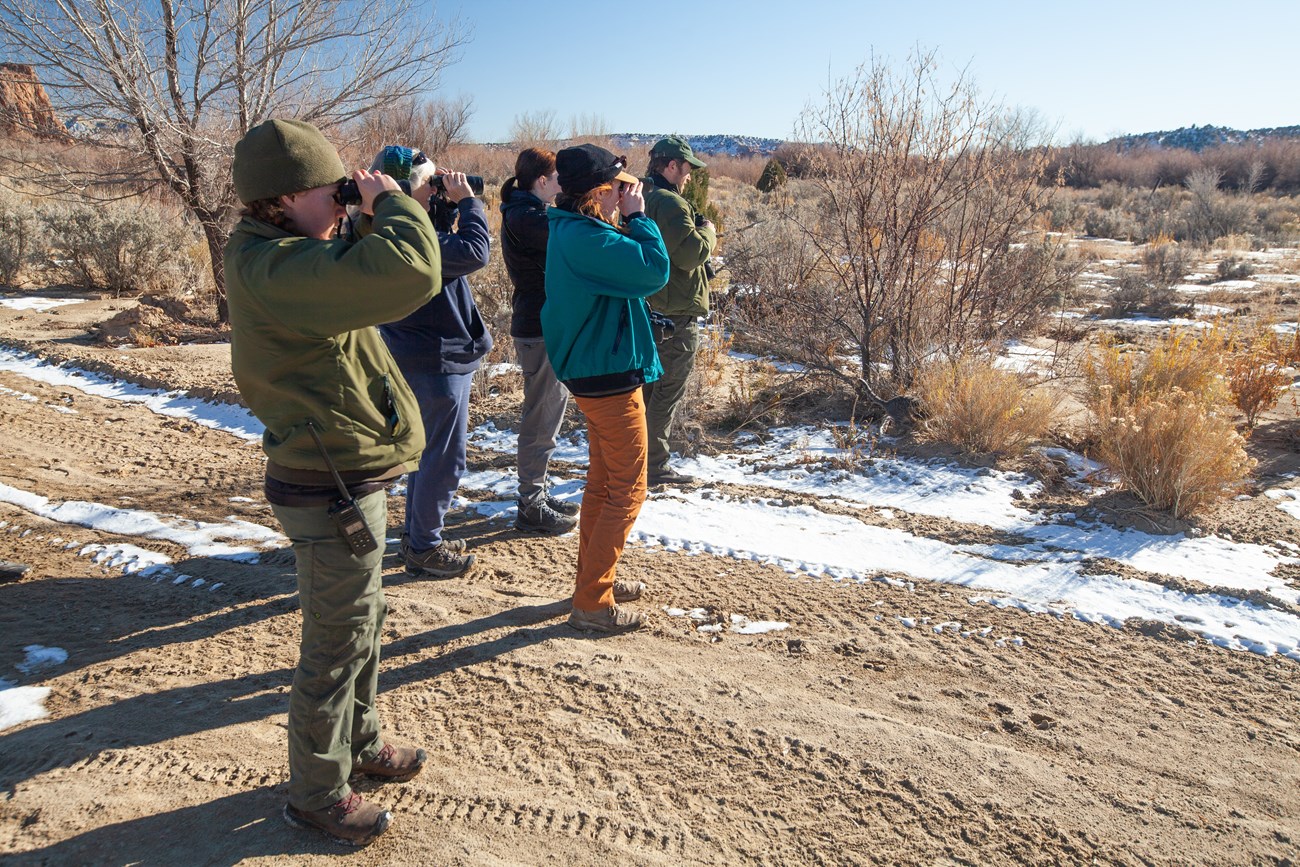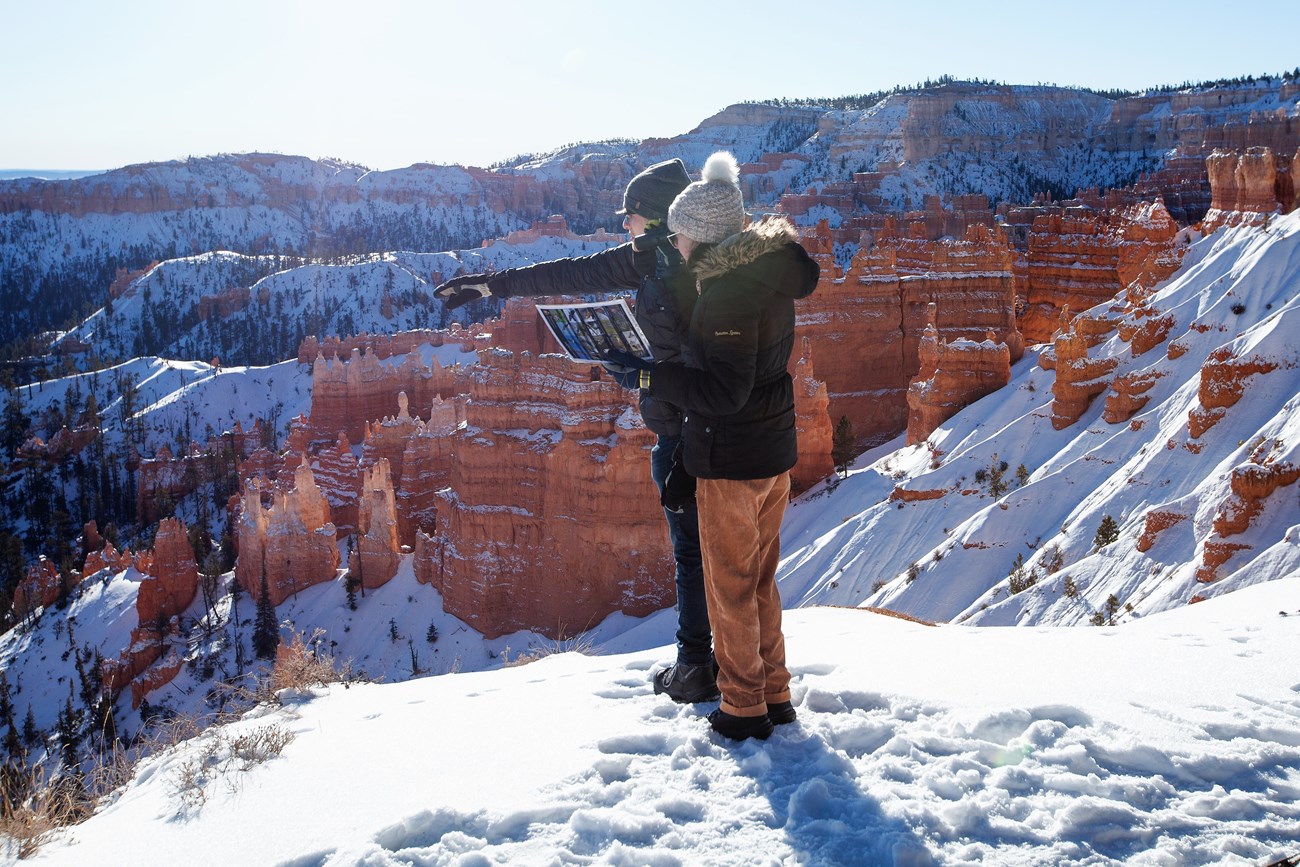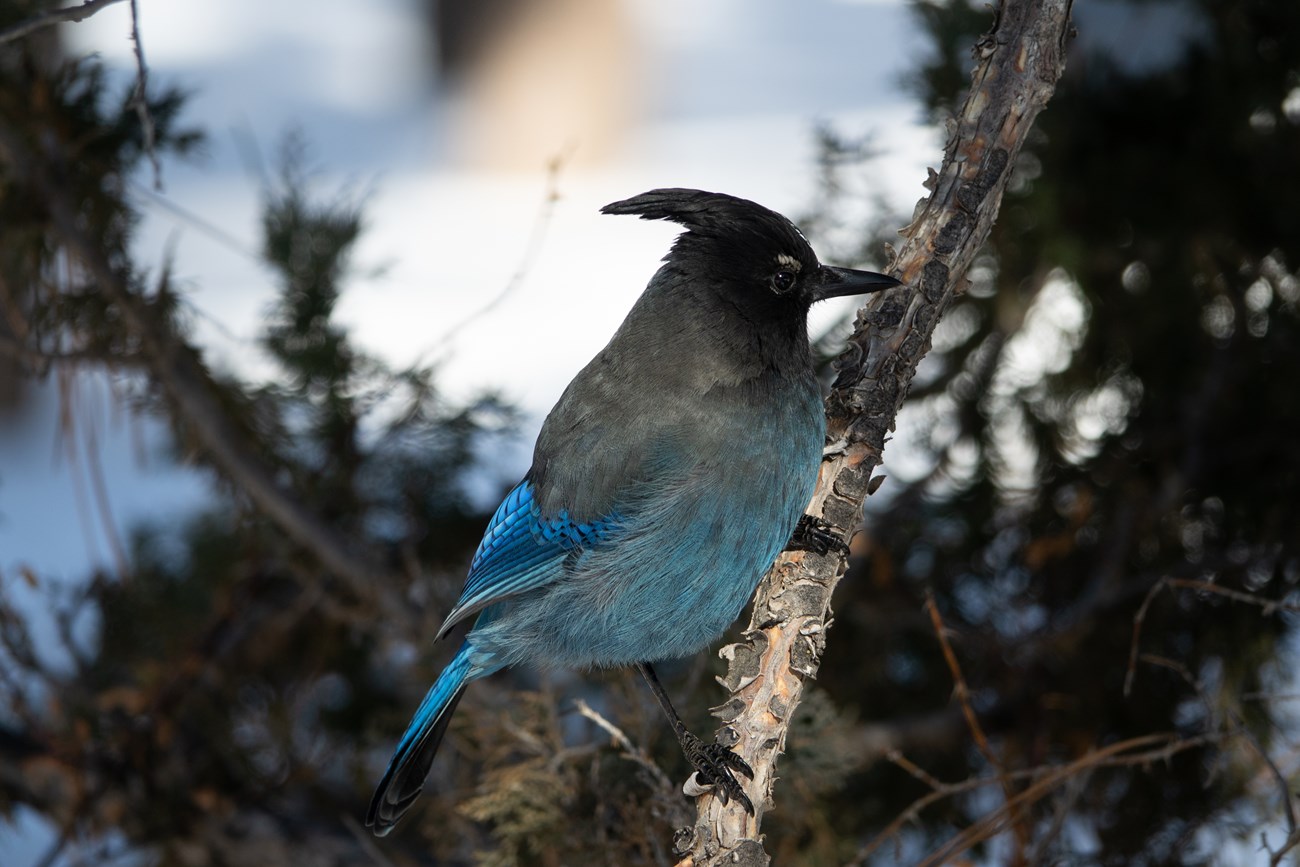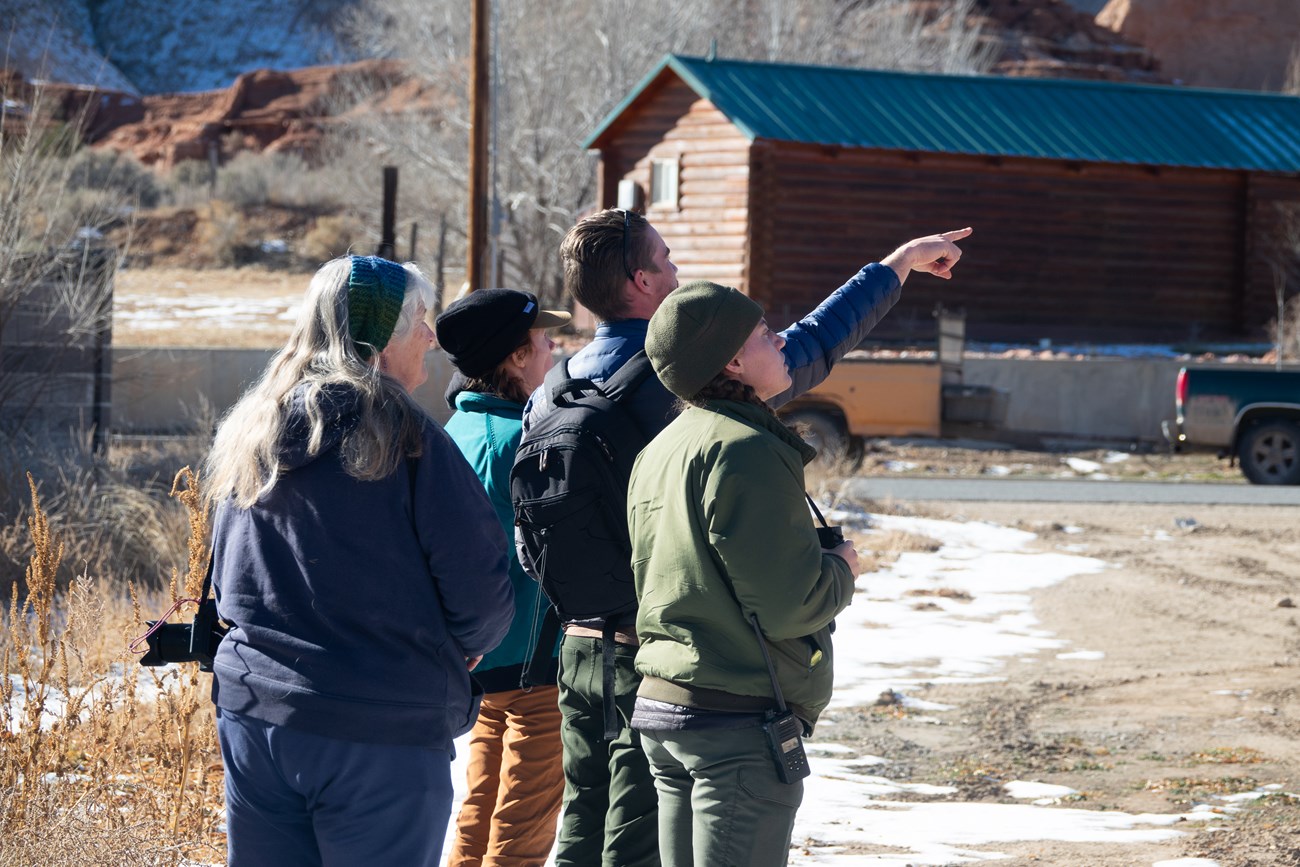Last updated: December 20, 2024
Article
Thinking and Counting Beyond Boundaries

NPS
It’s that time of year again, the holidays can be stressful. Spend a day of the holiday season this year leaving stress behind and taking part in an event that’s for the birds! Enjoy the opportunity to connect with nature and help birds across the country. Audubon’s 125th annual Christmas Bird Count (CBC) began on December 14, 2024, and continues through January 6, 2025. It’s an international event and involves many parks in the National Park System. It’s time to count down the new year by counting birds!
It all started back in 1900 when Frank Chapman asked members of the Audubon Society to volunteer to count birds in a census on Christmas day. Chapman thought it better to count birds than to hunt them as part of the “side hunt” that was popular back then. The original census included 27 volunteers and a log of 91 species. The modern Christmas Bird Count is an annual event that grows each year with more volunteers and more count sites. The count takes place in 15-mile diameter circles, where volunteers follow specified routes and count every bird they see or hear.
In 2023, The 124th annual Christmas Bird Count, recorded 83,186 volunteers in the U.S., Canada, Latin America, the Caribbean, and Pacific Islands. The count took place at 2,677 locations, and volunteers observed 2,380 bird species. Audubon and other scientists use the CBC to illustrate trends in bird populations and to talk about those trends when creating reports of wintering birds. The CBC is an invaluable data source across time.

NPS
A Small Count Can Make a Big Impact
National Park Service wildlife biologist Dave Treviño said, “The Audubon Christmas Bird Count has been happening for 125 years and while we do more of our population studies at other times of the year, the Christmas Bird count can inform us about species longevity by giving us a 100-year snapshot of what’s happening with bird populations nationwide. It’s pretty special to be part of that tradition.”
Staff and volunteers at North Cascades National Park have participated in the CBC for the last 35 years. Biologist Jason Ransom said, “As I look back over the counts, there were new species reported each year. That says something about the changing story of wintering birds in the North Cascades.”
The CBC goes beyond the usual scope of monitoring birds in National Parks and can add to data NPS scientists use when considering the effects of a changing climate on park landscapes and to expand thinking and research beyond park boundaries to a larger ecosystem and the larger conservation landscape outside of the park.

NPS/Peter Densmore
National parks will be increasingly critical sanctuaries for birds seeking suitable climate in new places. Birds in national parks will change as some birds colonize new habitat like the forests of Denali National Park, and others are forced to leave habitat that is no longer suitable. The National Park Service Climate Change Response Strategy encourages a holistic approach that the CBC complements. Not only does the CBC help scientists in the park with the monumental job of monitoring birds in a time of change but it is a great opportunity to reach out and bring in people from the community, to provide transformational experiences alongside rangers.

NPS/Cookie Ballou
Death Valley National Park is hosting its 60th bird count this year, almost as long as Death Valley has been a national park. “It’s the excitement that I’ve felt birding for 44 years,” said park wildlife biologist Bill Sloan. “It’s seeing the excitement in someone looking at their first Vermillion Flycatcher or showing them a Sandhill Crane! It’s all about instilling that excitement in people coming to Death Valley and hoping that they’ll continue to watch birds!”
At Great Sand Dunes National Park, biologist DeWayne Mosher said, “we are going to continue recording in a recently acquired section of the park that has a lot of Piñon forest and some areas of Cottonwood so we should see even more species to add to the wintering birds that we normally see.”
Mosher said that around 20 community volunteers show up each year. It’s a great way to engage the community and introduce people to data and conservation methods. The count at Great Sand Dunes National Park goes back to the early 1990’s giving the park 30 years of data to compare to nationwide data from the CBC.
Christmas Bird Counts take place at many parks throughout the National Park Service

NPS
Here are some of the many parks with local bird counts. Several of these parks have Audubon circles inside their boundaries that are up to one hundred percent within the national park.
-
Acadia National Park
-
Big Bend National Park
-
Bighorn Canyon National Recreation Area
-
Bryce Canyon National Park
-
Colorado National Monument
-
Congaree National Park
-
Cuyahoga National Park
-
Death Valley National Park
-
Gateway National Recreation Area
-
Glen Canyon National Recreation Area
-
Grand Canyon National Park
-
Great Sand Dunes National Park
-
Indiana Dunes National Park
-
Lake Mead National Recreation Area
-
North Cascades National Park
-
Pipestone National Monument
-
Pinnacles National Park
-
Rocky Mountain National Park
-
Sequoia and Kings Canyon National Parks
-
Wind Cave National Park
-
Yosemite National Park
At Bryce Canyon National Park staff reach out to local schools at Christmas Bird Count time. They have even brought feeders so that students could participate without a field trip to the park. Peter Densmore, a visual information specialist who organizes the CBC at Bryce says, “We do outreach and try to attract first timers. We want to make birding accessible to all ages and levels. You don’t have to be a wildlife biologist to be a birder. The idea is to provide a positive experience with birding in the park to create memories.”
All these parks are using the CBC to engage citizen scientists and to educate visitors about birding and about the methods of science and conservation. Parks are joining in and offering one of the best community-based science experiences around. For Christmas Bird Count and other birding events in National Parks check here:
If you can’t participate in a national park, you can participate at home or in your community. The idea of the Christmas Bird count is for people everywhere to become involved in the conservation of birds in the places that they love. See more about what you can do at home:
